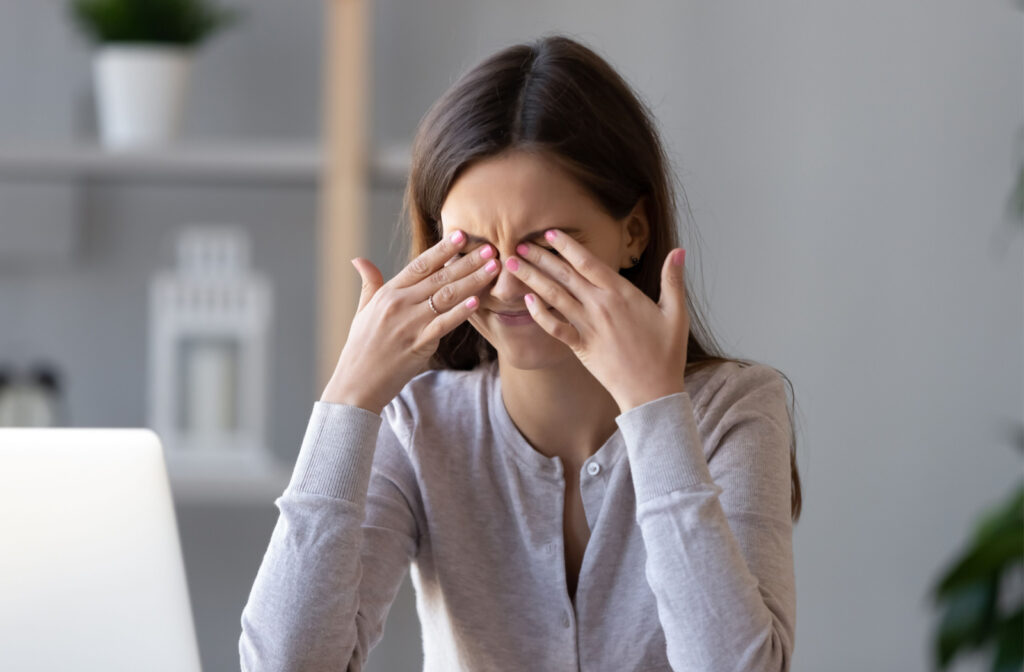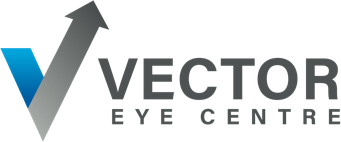When you’re struggling with eye irritation from dry eye, intense pulsed light therapy (IPL) and Lipiflow are treatment options that can provide lasting solutions to the symptoms.
Both IPL and Lipiflow are noninvasive procedures that use devices to break up blockages in the meibomian glands, allowing your eyes to produce fresh, well-balanced tears to lubricate dry eyes. Depending on the severity of your dry eye symptoms and the type of dry eye you experience, your eye care team can recommend a treatment plan to address your irritation effectively.
What Is Meibomian Gland Dysfunction?
MGD, or meibomian gland dysfunction, is the leading cause of dry eye. MGD happens when the meibomian glands that produce the oil needed for tear film quality and prevention of evaporation get blocked. This can cause the tears to evaporate too quickly, resulting in dry eyes and related symptoms, including:
- Blurred vision
- Sensitivity to light
- Burning or stinging sensation
- Grittiness or feeling like something is in your eye
IPL Therapy for Dry Eye
IPL therapy is a noninvasive procedure that uses accurately calibrated light pulses to stimulate the tissues and glands around the eyes. This helps reduce inflammation and activate the meibomian glands, which produce the oil layer of tears that moisten the eyes.
Emitted by a handheld device, the intense light penetrates deep into the skin, reducing inflammation and promoting healing. The gentle effects of the IPL treatment help to loosen the blocked meibomian glands and allow for easy expression of the blockages. This promotes the production of healthy oil, lubricating the eyes and reducing the discomfort associated with dry eye.
What Happens During IPL Treatment?
You should arrive at your appointment without makeup and with a clean face. Before the treatment, the doctor or technician applies a numbing drop to your eyes to minimize discomfort during the procedure, and applies eye protection. Then, the IPL device is placed close to your face, and the light is applied in a series of flashes around your eyes. Your top lids will then be treated with applied heat to loosen and dislodge the oils in the glands in the upper lids, and the technician will finish by applying moderate pressure to the lids to express anything stuck or obstructed within the glands. The entire treatment takes about 45 minutes per session. Some patients will start to notice improvements as soon as a few days after the procedure.
How Many Treatments Are Needed?
The number of IPL treatments you need will depend on the severity of your dry eye symptoms. Most patients require a series of 3-4 treatments on average, one month apart. After the initial treatment, patients often experience significant improvement in their dry eye symptoms. However, maintenance treatments may be required to maintain the benefits of IPL treatment.
Lipiflow for Dry Eye
Lipiflow uses thermal pulsation to unclog blocked meibomian glands. It works by applying heat and pressure to the eyelids, which is then used to express the meibomian glands. This helps restore the natural flow of oil to the eye’s surface, which keeps the eyes moist and healthy. Lipiflow is also a noninvasive procedure and has been shown to be effective in treating dry eye.
What Happens During Lipiflow Treatment?
LipiFlow is a safe and straightforward in-office procedure that typically takes only 12 minutes. Your eye care professional will use numbing drops to help keep the treatment comfortable with minimal irritation.
The device uses an activator and a disposable eyepiece that carefully heats the eyelids and massages them, allowing excess oil and debris to be released. The gland’s healthy function is restored, leading to more comfortable and functional tears.
How Many Lipiflow Treatments Are Needed?
Most patients experience significant improvement in their symptoms within 2 to 4 weeks after the treatment. Some patients can find sustained relief from dry eye symptoms for up to 12 months. However, in most cases the treatment is repeated every 6-12 months.
Radiofrequency for Dry Eye
The use of radiofrequency for the treatment of dry eye has been gaining attention in recent years as another therapeutic option. This innovative approach utilizes controlled waves of electromagnetic energy to target the underlying causes of dry eyes, such as meibomian gland dysfunction and inflammation.
By gently heating the affected areas, radiofrequency promotes increased blood flow, stimulates oil production, and reduces inflammation, leading to improved tear film stability and overall relief from dry eye symptoms.
As research in this field continues to evolve, radiofrequency holds excellent potential for revolutionizing the management of dry eye and improving the quality of life for countless individuals.

Find Modern Relief From Dry Eye
Both IPL therapy and Lipiflow are positive treatment options for long-lasting relief from dry eye. However, the right choice for you will depend on your individual case and needs. Schedule a consultation with Vector Eye Care, where our expert team can help you determine which treatment is ideal for you.



